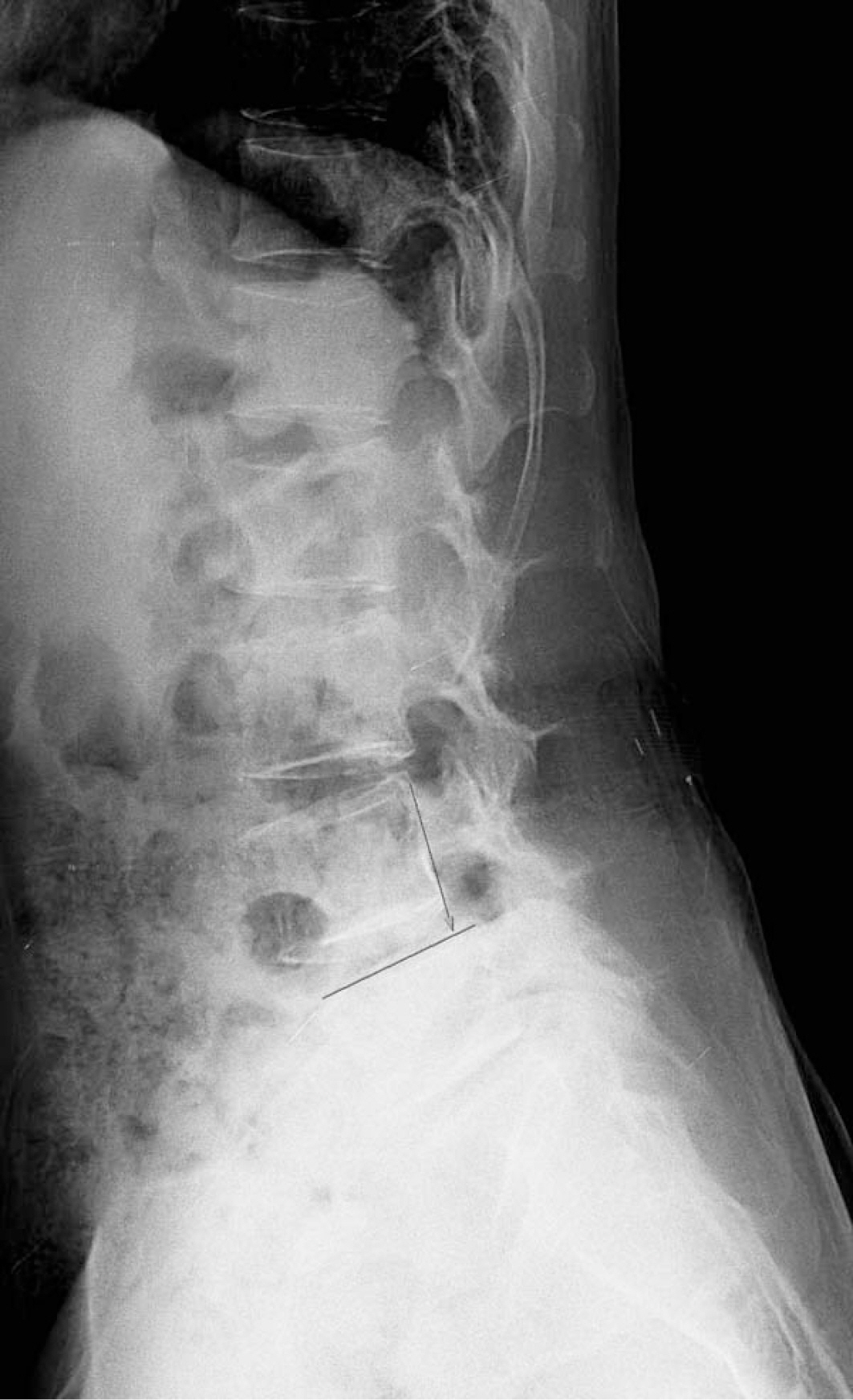J Korean Soc Spine Surg.
2018 Dec;25(4):154-159. 10.4184/jkss.2018.25.4.154.
Concurrent Degenerative Cervical and Lumbar Spondylolisthesis
- Affiliations
-
- 1Department of Orthopaedic Surgery, Hallym University Sacred Heart Hospital, Medical College of Hallym University, Gyeonggi-do, Republic of Korea. amhangpark@gmail.com
- 2Department of Orthopaedic Surgery, Gangnam Sacred Heart Hospital, Hallym University College of Medicine, Seoul, Republic of Korea.
- 3Department of Neurosurgery, Hallym University Sacred Heart Hospital, Medical College of Hallym University, Gyeonggi-do, Republic of Korea.
- 4Department of Orthopaedic Surgery, Kangdong Sacred Heart Hospital, Medical College of Hallym University, Seoul, Republic of Korea.
- 5Department of Orthopedic Surgery, Columbia University Medical Center / NY-Presbyterian Hospital, The Spine Hospital at NY-Presbyterian/Allen Hospital, New York, NY, USA.
- KMID: 2430140
- DOI: http://doi.org/10.4184/jkss.2018.25.4.154
Abstract
- STUDY DESIGN: Retrospective radiographic study.
OBJECTIVES
To evaluate the characteristics of concurrent degenerative cervical and lumbar spondylolisthesis. SUMMARY OF LITERATURE REVIEW: Concurrent degenerative cervical and lumbar spondylotic diseases have been reported. Given that severe spondylosis can result in spondylolisthesis, one might expect that concurrent spondylolisthesis of the cervical and lumbar spines might also be prevalent. However, the incidence of spondylolistheses in the lumbar and cervical spines might differ due to anatomical differences between the 2 areas. Nonetheless, there is minimal information in the literature concerning the incidence of concurrent cervical and lumbar spondylolisthesis. MATERIAL AND METHODS: We evaluated standing cervical and lumbar lateral radiographs of 2510 patients with spondylosis. Concurrence, age group, gender, and direction of spondylolisthesis were evaluated. Lumbar spondylolisthesis was defined as at least Meyerding grade I and degenerative cervical spondylolisthesis was defined as over 2 mm of displacement on standing lateral radiographs.
RESULTS
Lumbar spondylolisthesis was found in 125 patients (5.0%) and cervical spondylolisthesis was found in 193 patients (7.7%). Seventeen patients had both degenerative cervical and lumbar spondylolistheses (0.7%). Lumbar spondylolisthesis is a risk factor for co-existing cervical spondylolisthesis. Lumbar spondylolisthesis was more common in females than males, independent of advancing age. In contrast, degenerative cervical spondylolisthesis was more common in older patients, independent of gender. Anterolisthesis was more common in the lumbar spine. Retrolisthesis was more common in the cervical spine.
CONCLUSIONS
There was a higher prevalence of degenerative cervical spondylolisthesis in patients with degenerative lumbar spondylolisthesis.
MeSH Terms
Figure
Reference
-
1. Jacobs B, Ghelman B, Marchisello P. Coexistence of cervical and lumbar disc disease. Spine (Phila Pa 1976). 1990 Dec; 15(12):1261–4. DOI: 10.1097/00007632-199012000-00006.
Article2. Teng P, Papatheodorou C. Combined Cervical and Lumbar Spondylosis. Arch Neurol. 1964 Mar; 10(3):298–307. DOI: 10.1001/archneur.1964.00460150068007.
Article3. Choudhury AR, Taylor JC. The cervicolumbar syndrome. Ann R Coll Surg Engl. 1980 May; 62(3):200–2.4. Master DL, Eubanks JD, Ahn NU. Prevalence of concurrent lumbar and cervical arthrosis: an anatomic study of cadaveric specimens. Spine (Phila Pa 1976). 2009 Apr; 34(8):E272–5. DOI: 10.1097/BRS.0b013e318195d10b.5. van Saase JL, van Romunde LK, Cats A, et al. Epidemiology of osteoarthritis: Zoetermeer survey. Comparison of radio-logical osteoarthritis in a Dutch population with that in 10 other populations. Ann Rheum Dis. 1989 Apr; 48(4):271–80. DOI: 10.1136/ard.48.4.271.
Article6. Lawrence JS. Disc degeneration. Its frequency and relationship to symptoms. Ann Rheum Dis. 1969 Mar; 28(2):121–38. DOI: 10.1136/ard.28.2.121.
Article7. Kopacz KJ, Connolly PJ. The prevalence of cervical spondylolisthesis. Orthopedics. 1999 Jul; 22(7):677–9.8. Lee C, Woodring JH, Rogers LF, et al. The radiographic distinction of degenerative slippage (spondylolisthesis and retrolisthesis) from traumatic slippage of the cervical spine. Skeletal Radiol. 1986; 15(6):439–43. DOI: 10.1007/bf00355101.
Article9. Herkowitz HN. Spine update. Degenerative lumbar spon-dylolisthesis. Spine (Phila Pa 1976). 1995 May; 20(9):1084–90. DOI: 10.1097/00007632-199505000-00018.10. Bolesta MJ, Bohlman HH. Degenerative spondylolisthesis. Instructional course lectures. Instr Course Lect. 1989; 38:157–65.11. Barrey C, Jund J, Noseda O, et al. Sagittal balance of the pelvis-spine complex and lumbar degenerative diseases. A comparative study about 85 cases. Eur Spine J. 2007 Sep; 16(9):1459–67. DOI: 10.1007/s00586-006-0294-6.
Article12. Park MS, Moon SH, Lee HM, et al. The effect of age on cervical sagittal alignment: normative data on 100 asymptomatic subjects. Spine (Phila Pa 1976). 2013 Apr; 38(8):E458–63. DOI: 10.1097/BRS.0b013e31828802c2.
- Full Text Links
- Actions
-
Cited
- CITED
-
- Close
- Share
- Similar articles
-
- High Grade Infective Spondylolisthesis of Cervical Spine Secondary to Tuberculosis
- Degenerative Spondylolisthesis in Thoracic Spine
- Differential Points Between Spondylolytic Spondylolisthesis and Degenerative Spondylolisthesis in Lumbar Spine CT
- Significance of Facet Fluid Index in Anterior Cervical Degenerative Spondylolisthesis
- Radiological Evaluation of the Initial Fixation between Cortical Bone Trajectory and Conventional Pedicle Screw Technique for Lumbar Degenerative Spondylolisthesis


